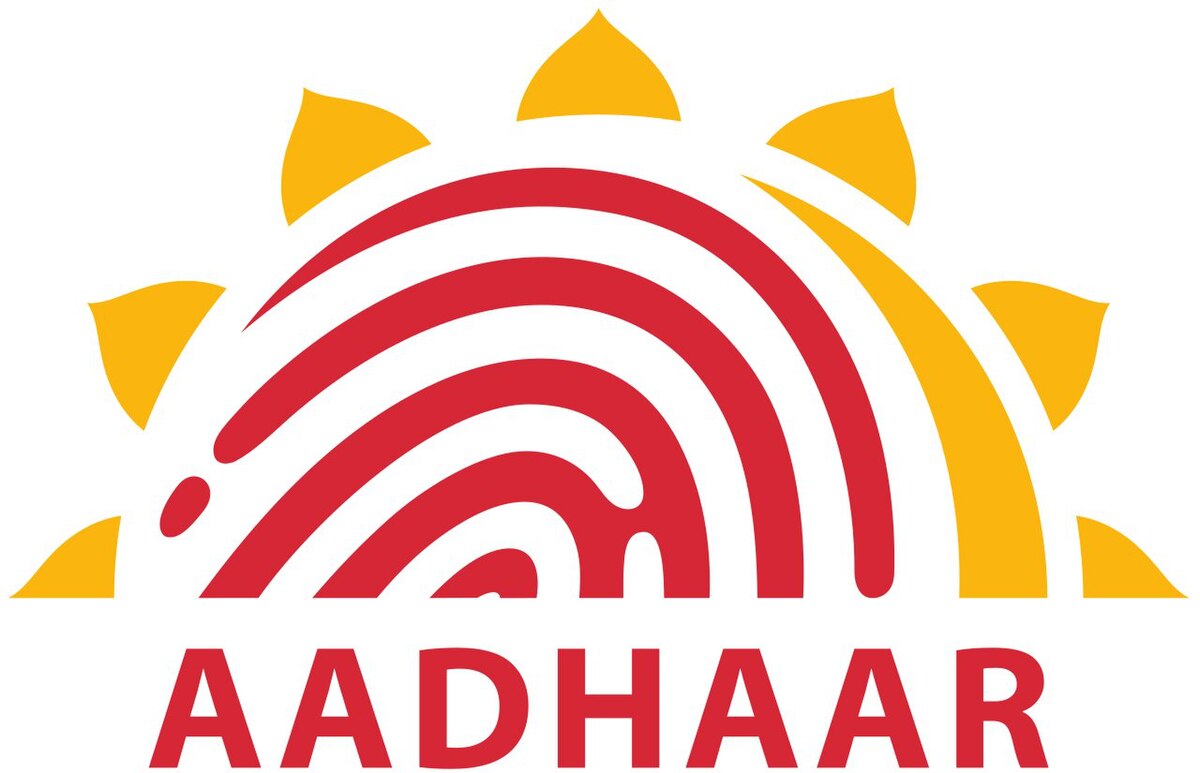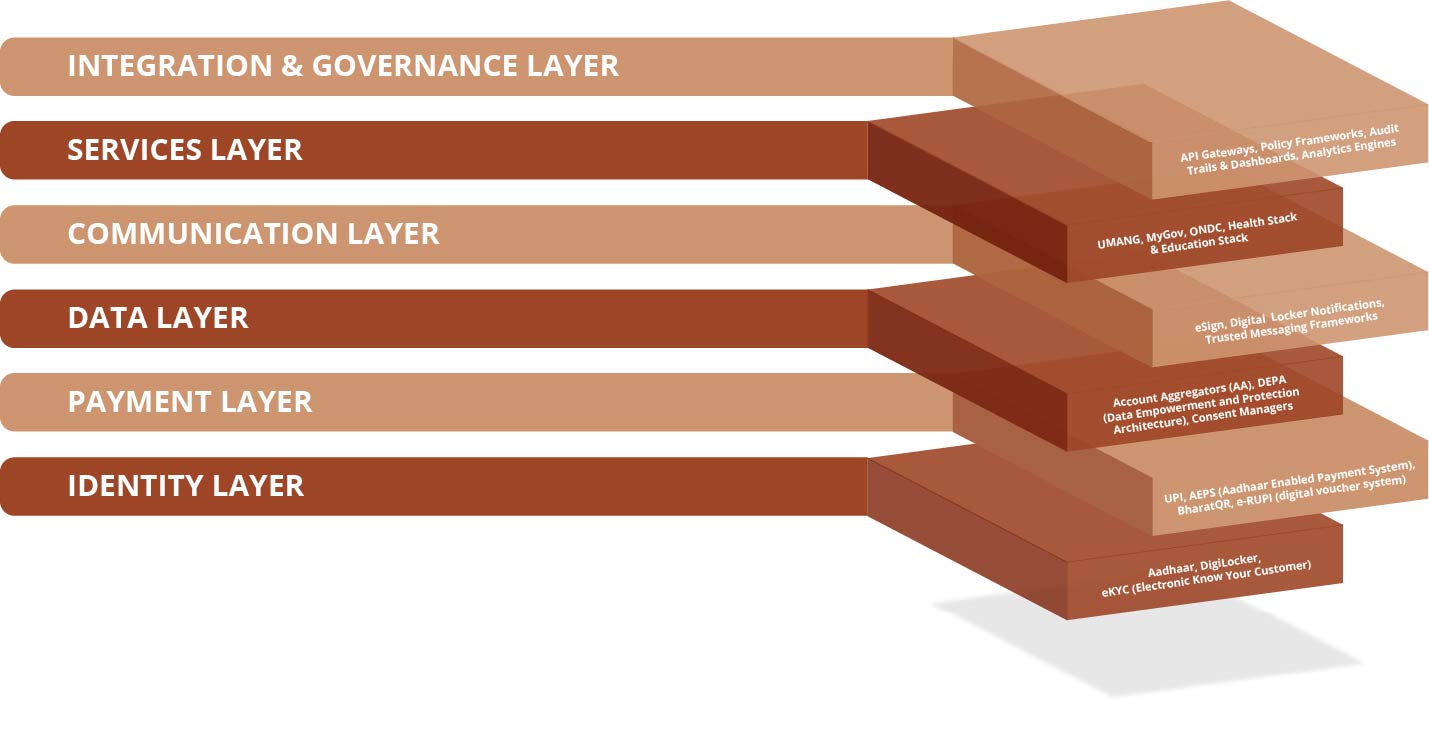India
A Land of Opporunity

The India Stack:
A technological ingenuity geared for inclusive growth
India Stack has been responsible for opening bank accounts for more than 450 million households. The Direct Benefit Transfer system, which channels subsidies directly to beneficiaries, and Stand-Up India, which facilitates loans for women and underrepresented entrepreneurs, have collectively widened access to banking, healthcare, and livelihoods. So, what exactly is the India Stack, and why does this matter for the venture world? We dive into this topic with Akshay Lamba.

A perspective on India’s Digital Initiatives and the impact on innovation
Productivity & Innovation have been recognised as key national levers that impact foundational elements like economic growth, living standards, cost efficiencies and agility that in turn create value through innovation.
India’s digital roadmap, when viewed holistically, is creating fundamental long-term shifts in this arena through its digital framework; consider the following: “India Stack Global has been launched to showcase the India Stack and its building blocks globally. At present, it includes 15 key projects/ platforms:
Aadhaar – a Digital ID platform
Unified Payments Interface (UPI) – a real-time payment system
U-WIN – Universal Immunisation Win – a platform to track immunisation across the country
API Setu – an open API platform enabling seamless data exchange and driving innovation in the e-governance landscape
DigiLocker – a digital document wallet platform
Open Network for Digital Commerce (ONDC) – is India’s bold attempt to rewire the e-commerce landscape. Think of it as the “UPI moment” for online shopping: a government-backed protocol that lets buyers and sellers connect across platforms
Government eMarketplace (GeM) – a digital marketplace that aims to modernise and optimise the way the Indian government procures goods and services, promoting transparency, efficiency, and inclusivity in the process
Unified Mobile Application for New-age Governance (UMANG) – a platform to provide citizens with access to various government services through a single mobile application
and website
Digital Infrastructure for Knowledge Sharing (Diksha) – A national digital infrastructure for teachers to access and create high-quality teaching and learning material.
eSanjeevani: A national telemedicine service enabling doctor-to-doctor and patient-to-doctor consultations.
eHospital: A hospital management information system aiming to digitise hospital operations and services.
eOffice: A core infrastructure and services platform for electronic management of government files and workflows.
eCourt: A platform providing judicial services and information to citizens, advocates, and the judiciary through electronic means.
POSHAN Tracker: An application used by Anganwadi workers to track and monitor the nutritional status of children and pregnant women.
NCD Platform: A platform for the prevention, control, and screening of non-communicable diseases.
These 15 initiatives, when investigated through the prism of an enterprise architecture framework, lay out a bold, exciting and opportunities-laden path for the nation. Let’s delve deeper into 3 of these areas and the macroeconomic impact of some of these initiatives.
Some of the key components in India Stack:

Aadhar loosely translates to ‘base, foundation, root, ground’, is a twelve-digit unique identity number that can be obtained voluntarily by all residents of India based on their biometrics and demographic data. Over 1.38 billion Aadhaar cards have been issued in India according to the Unique Identification Authority of India (UIDAI). This makes it one of the largest biometric ID systems in the world. National identification and authentication system (MS AD for the nerds in us!)

National digital payments framework – The efficiencies gained through digital transactions rather than physical ones are just a by-product; the economic impact it has created in reducing the leakage between government programs and disbursements, thereby actually implementing their development programs, has had a generational impact. The UPI protocol was developed in India in 2016, and the interface facilitates peer-to-peer (P2P) and peer-to-merchant payments. As of 2025, the platform had over 500 million active users in India. In May 2025, 18.67 billion UPI transactions worth approximately 293 billion USD were processed by the UPI system, equivalent to almost 7,000 transactions on average every second. The widespread adoption and usage of UPI has positioned India as the global leader in instant payments, with adoption of this in sophisticated jurisdictions such as Singapore, France, UAE, Sri Lanka and Bhutan.
Street vendor using the UPI to transact digitally:

The digital stack in India is inherently being built for open connectivity through this component. The design choice here not only enables the government initiatives to operate more efficiently amongst themselves, but also adds the layer of public connectivity, again, generationally impacting the ability for the nation to innovate!
India Stack:
The Value Proposition
At a rudimentary level, if
Economic value created by 3 initiatives = A
Hence, expected economic value created by 15 initiatives = 5 X A
And that’s the value proposition here, at least we know that the impact of India’s digital vision is just starting to show and the world has appreciated the

significant value created by it – but this is just the start; at least we have 5X of the impact yet to be realised, and that’s at the least. As we extend our understanding to include the paradigm of impact fuelling further impact, our view is that the economic multiple here is certainly greater than 5 due to the sheer size of the population and the sheer brilliance of the digital stack design to address scalability.
The above is just the domestic impact story – the global value proposition is just starting to gestate. Should we ponder a “National – ERP” model on subscription?
This re-imagining of national levers, the depth of designs, the execution – it all lays out an exciting and multi-pronged investment and growth opportunity. We address this opportunity as multi-pronged since this is now an in-flight initiative and “early” signs of success are clearly showing, giving us distinct long-term, medium-term, and short-term investment and hence growth and innovation opportunities.
Simplistically, India’s digital vision seems very aligned to India’s strength of digitising organisations across the world, but on steroids, scaled to address one of the most populous nations on the planet!
However, the India digital stack isn’t merely a collection of technologies, rather a layered ecosystem designed to empower citizens, businesses and government entities to interact seamlessly. It also adds significant value in key economic value drivers like the pace of innovation in the startup economy.
A macro architecture in its simplistic form is a logical aggregation of the various components and how they “stack up” to create solutions. The solutions reduce costs and drive efficiencies across different interactions between citizens, businesses and government.
Let’s have a deeper look at the distinct components of the stack to gain an appreciation for potential real-world solutions emerging from the deployment of the stack.

India Stack: Components of the Macro Architecture Cube
Integration & Governance Layer
Purpose
Serves as the orchestrator of the entire stack—ensuring interoperability, compliance, scalability, and policy enforcement across all digital services.
Key Components
API Gateways: Standardised, secure interfaces that allow seamless integration between public and private services.
Policy Frameworks: Regulatory and operational guidelines that ensure ethical, lawful, and inclusive use of digital infrastructure.
Audit Trails & Dashboards: Real-time monitoring tools for transparency, performance tracking, and compliance enforcement.
Analytics Engines: Enables data-driven governance and continuous improvement of services.
Impact
This layer ensures that the stack operates as a cohesive, trusted ecosystem, enabling innovation without compromising on accountability or security.
Service Delivery Layer
Purpose
Key Components
UMANG (Unified Mobile Application for New-age Governance): A single platform for accessing 100+ government services.
MyGov: A citizen engagement platform for participatory governance.
ONDC (Open Network for Digital Commerce): Aims to democratize e-commerce by enabling interoperability among platforms.
Health Stack & Education Stack: Sector-specific digital ecosystems for healthcare and learning.
Communication & Trust Layer
Purpose
Key Components
eSign: Enables users to digitally sign documents using Aadhaar-based authentication.
Digital Locker Notifications: Secure delivery of official documents like driving licenses, academic certificates, etc.
Trusted Messaging Frameworks: Secure communication protocols for government and enterprise services.
Impact
Reduces fraud, increases trust in digital transactions, and streamlines document workflows.
Bridges the digital divide by making essential services accessible even in remote areas.
Data Empowerment Layer
Purpose
Key Components
Account Aggregators (AA): A framework that allows users to consolidate and share financial data across institutions.
DEPA (Data Empowerment and Protection Architecture): A consent-based data sharing model that ensures privacy and user control.
Consent Managers: Intermediaries that facilitate secure, auditable consent flows between data providers and consumers.
Impact
Payments Layer
Purpose
Key Components
UPI (Unified Payments Interface): A real-time payment system that allows instant money transfers between bank accounts via mobile apps.
AEPS (Aadhaar Enabled Payment System): Allows basic banking transactions using Aadhaar authentication.
BharatQR: A QR code-based payment solution that supports multiple payment networks.
e-RUPI: A digital voucher system for targeted, purpose-specific payments (e.g., subsidies, scholarships).
Impact
Identity Layer (Centre/Core)
Purpose
Key Components
Aadhaar: A 12-digit biometric-based unique identity number issued to residents.
DigiLocker: A cloud-based platform for issuing and verifying documents and certificates digitally.
eKYC (Electronic Know Your Customer): Enables paperless identity verification using Aadhaar.
Impact
Why the Cube Matters

Aadhaar (Identity) + UPI (Payments) = Financial inclusion.
DigiLocker (Identity) + eSign (Trust) = Paperless governance.
Account Aggregators (Data) + UPI (Payments) = Personalised financial products.
The narrative of India’s digital vision, propelled by the ingenious macro architecture of the India Digital Stack, paints a compelling picture not just of domestic transformation but of a potential blueprint for global economic development. What we’ve explored through initiatives like Aadhaar, UPI, and API Setu is merely the tip of the iceberg, a foundational trilogy whose profound impact hints at the exponential value yet to be unlocked by the full suite of 15 “National Levers.”.
The sheer scale of India’s population, combined with the inherently scalable and interoperable design of the digital stack, creates a virtuous cycle where impact fuels further impact. This isn’t just about point solutions like addressing leakages or driving efficiencies; it’s about fostering a nation of innovators, democratising access to services, and enabling an agile, competitive economy that can respond to the demands of the 21st century.
The vision of a “National ERP model on subscription” through the export of this digital infrastructure is not a distant dream, but a gestating reality with immense global implications. This re-imagining of national levers, characterised by thoughtful depth of design and exceptional execution, lays out a multi-pronged investment and growth opportunity that is already showing “early signs of success”. From long-term structural shifts to medium and short-term market gains, the India Digital Stack is transforming the economic landscape, proving that true digital disruption is not merely a collection of technologies but a meticulously layered ecosystem designed to empower every citizen, business, and government entity, driving unprecedented innovation and economic value.

Concluding thoughts:

The impact of India Stack is significant to the point of a generational change on multiple economic levers, not just domestically in India but globally.

There is so much more headroom to fully tap into the potential of the India stack - pace of innovation, ability to productise the stack for other developing nations and leapfrogging development.
About the Author

